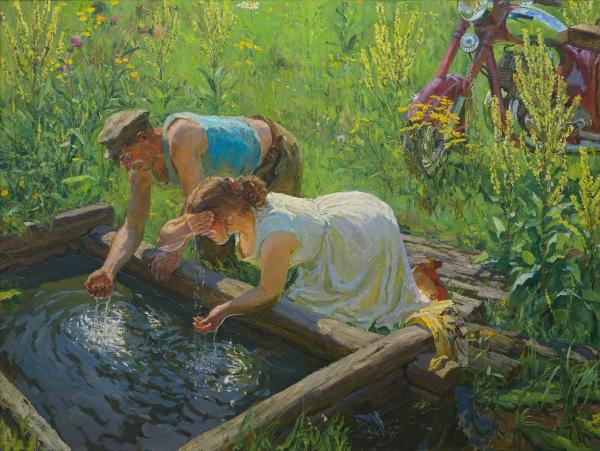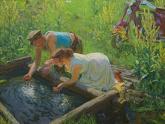Noon
1961
- Period Late 20th century – 21st century
- CategoryGenre Painting
- Share
Almost all the paintings by Arkady Plastov are devoted to the life of peasants. Having studied at the Stroganov Central College of Art and Industry (1912-1914) and the Moscow School of Painting, Sculpture and Architecture (1914-1917) Plastov returned to his home village of Prislonikha in the Province of Simbirsk (Nowadays - the Ulyanovsk region) and devoted his works to its people. Each stroke of the painting is trembling and full of colour and light. The subject of the picture is taken from life as is usual for the artist. On a hot day a man and a woman have ridden by motorcycle to the well and are washing their flushed warm faces with the cool water and in the depth of the well the sun itself is shining and its reflections are falling on their faces, clothes and the grass.
Like a precious cloth the painted surface of the canvas is woven from thousands of different strokes. The harmony of paints, complicated and subtle play of light, sharp contrasts - all these are subordinated to the expression of joy and fullness of human existence. The midday, the Nature at its zenith and the peak of the human life – it is a timeless theme of art. And though the contemporary reality is marked by a characteristic feature – a motorcycle whose iron frame can be seen through the lace of green grass - this reality bears no relation to the essential qualities of the painted canvas.
Arkady Plastov continued the traditions of Russian Romanticism and first of all of Brullov and Venetsianov. In his works Plastov revealed the idea of harmonious merging of a man with nature. The artist does it freely using the material of simple life but he gives to it real significance, which marks the true work of art.

